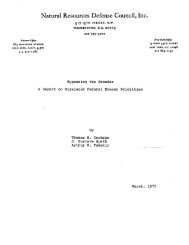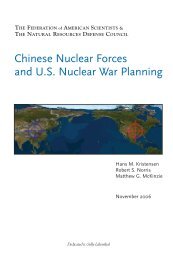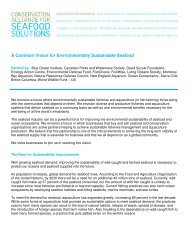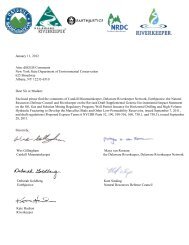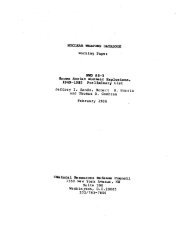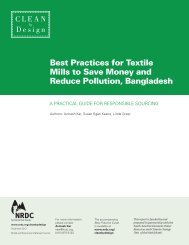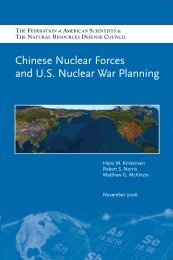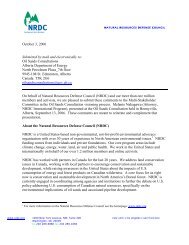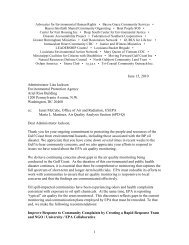3. Nuclear weapons - NRDC Document Bank - Natural Resources ...
3. Nuclear weapons - NRDC Document Bank - Natural Resources ...
3. Nuclear weapons - NRDC Document Bank - Natural Resources ...
Create successful ePaper yourself
Turn your PDF publications into a flip-book with our unique Google optimized e-Paper software.
installed in Georgia and Texas may have such a wide angle coverage that they<br />
cannot be considered to fulfil the requirements of the ABM Treaty that they<br />
should be oriented outwards from the national territory .130<br />
Geneva proposals<br />
Following the meeting between Secretary of State Shultz and then Foreign<br />
Minister Gromyko in January 1985, the USA and the USSR agreed to pursue<br />
arms control agreements that would: 'End the arms race on earth and prevent<br />
one in space; limit and reduce nuclear <strong>weapons</strong>; and strengthen strategic<br />
stability' .131<br />
The USA announced its four objectives for the Geneva talks as:<br />
Radical reductions in the number, and destructive power, of offensive strategic arms;<br />
the elimination of intermediate-range forces, or their reduction to the lowest possible<br />
equal global limits; a'reversal of the erosion of the 1972 Anti-Ballistic Missile (ABM)<br />
Treaty . . .; and a discussion of the possibility of both sides moving away from<br />
deterrence based solely on the threat of massive nuclear retaliation toward increased<br />
reliance on non-threatening defenses, whether ground- or space-based, against nuclear<br />
ballistic missiles. 132<br />
Since the negotiations opened at Geneva, there has been a succession of<br />
proposals and counter-proposals. The USA took to the Geneva talks its<br />
standing proposals from the START negotiations, which included a limit of<br />
5000 warheads on strategic ballistic missiles and a sublimit of 2500 warheads on<br />
ICBMs. On 30 September 1985, Soviet Foreign Minister Shevardnadze presented<br />
to President Reagan the first concrete Soviet proposals for Geneva.<br />
Meanwhile, General Secretary Gorbachev unveiled many of the points of his<br />
new proposal in Paris and sought separate negotiations with France and Britain<br />
on their nuclear forces (both governments refused this offer).<br />
On 31 October 1985, President Reagan announced that the USA had<br />
formulated a package of counterproposals which was formally presented at<br />
Geneva the next day. Reagan described the goals ofthe new proposals simply<br />
as, 'deep cuts, no first-strike advantage, defensive research-because defense<br />
is safer than offense-and no cheating'.133 These offers were something of a<br />
compromise between the US START position and the Soviet proposals,<br />
although there remain considerable differences.<br />
On 15 January 1986, General Secretary Gorbachev presented a three-stage<br />
plan to eliminate nuclear <strong>weapons</strong> by the year 2000. The first stage, lasting five<br />
to eight years, is explicitly concerned with US and Soviet nuclear weapon<br />
systems. On strategic offensive <strong>weapons</strong>, it appears to embody the proposals<br />
discussed below and set out in figures <strong>3.</strong>1 and <strong>3.</strong>2. It includes the requirement<br />
that 'the USSR and the USA renounce the development, testing and<br />
deployment of space-strike <strong>weapons</strong>' , and also that they both agree to stop all<br />
nuclear weapon tests. This proposed first stage does embody a new suggestion<br />
on intermediate-range missiles, an important new proposal from the Soviet<br />
side.<br />
The second stage, which should start no later than 1990, would bring in other<br />
nuclear weapon powers; it would involve, inter alia, the elimination of all



